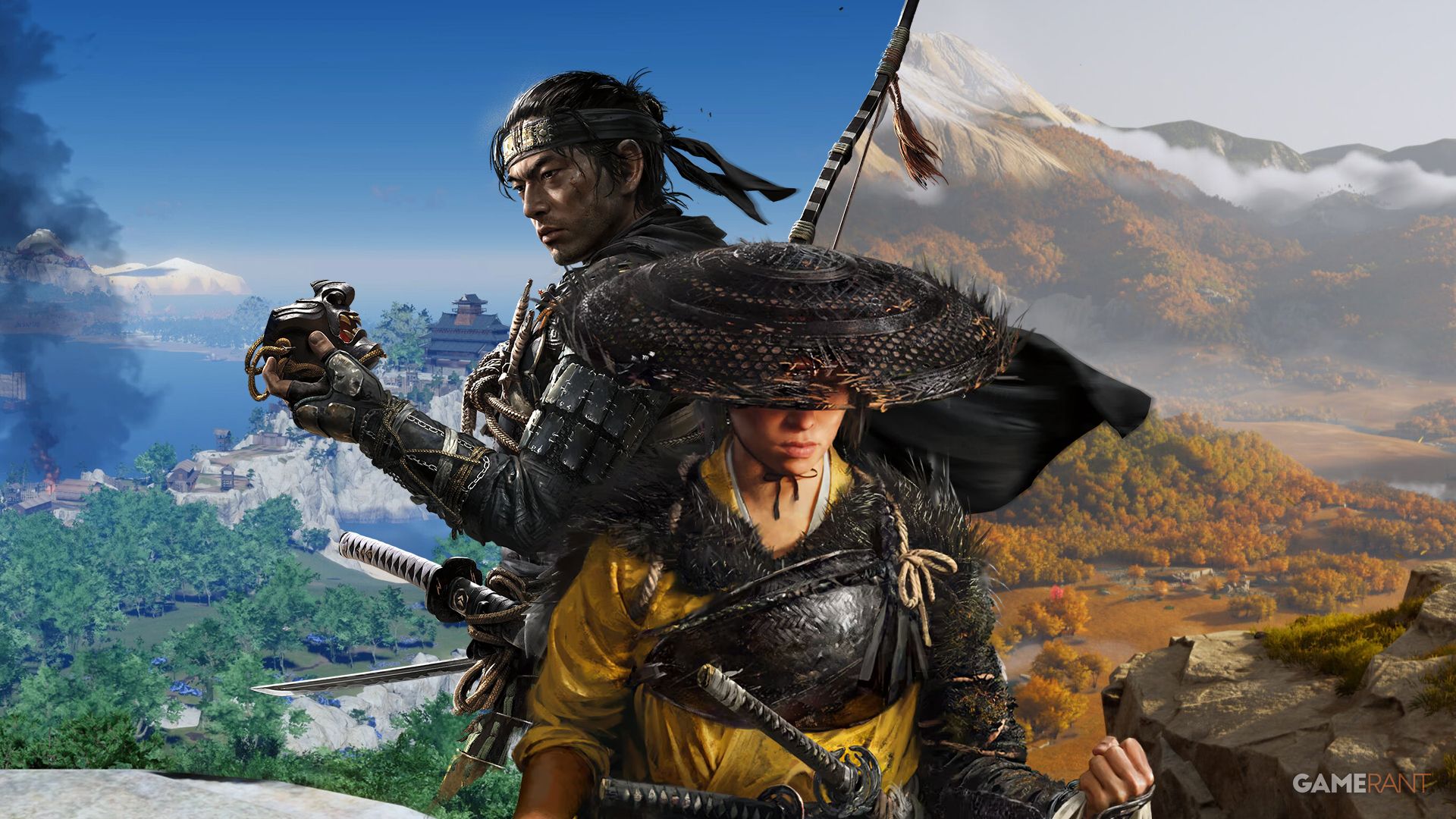Ghost of Yotei is finally here, and some of the biggest questions surrounding the anticipated sequel are how it differs from its predecessor, Ghost of Tsushima. Set 300 years after the events of Ghost of Tsushima, the fresh timeline of Ghost of Yotei opens the door for more advanced weapons and a new story, but one of the most intriguing changes of all is the change in location.
Instead of its predecessor’s titular Tsushima Island, Ghost of Yotei is set in Ezo, modern-day Hokkaido. Nestled in the northern regions of Japan, Ezo’s landscape differs greatly from Tsushima, but one of the most significant differences of all is how much bigger it is than the island. This paves the way for Ghost of Yotei‘s map to be far larger than Ghost of Tsushima‘s, but that isn’t entirely the case.
Ghost of Yotei's Ezo Avoids Overshadowing Ghost of Tsushima's Map
Ghost of Yotei Features Six Main Regions
- Tokachi Range
- Yotei Grasslands
- Ishikari Plain
- Oshima Coast
- Teshio Ridge
- Nayoro Wilds
Ghost of Tsushima's Map is Split Into Three Regions
- Izuhara
- Toyotama
- Kamiagata
When comparing this to the base version of Ghost of Tsushima, it’s clear that Ghost of Yotei‘s map has twice as many regions to explore, but developer Sucker Punch has done a good job at making sure the extra areas don’t feel overwhelming. While twice as many regions sound larger on paper, Ghost of Yotei uses the jaw-dropping landscape of Ezo to drive home its size difference instead of utilizing actual landmass.
Ghost of Tsushima‘s map grows even larger when taking into consideration the Iki Island DLC.
Ghost of Yotei's Map is a Clever Illusion
With smart use of landmarks, landscape features like rivers and grasslands, and seeing the intimidating beauty of Mount Yotei standing in the background, Ghost of Yotei quickly looks like a far more dense world, but it’s still relatively close to Ghost of Tsushima‘s size.
Developing a version of Ezo that is to-scale would call for a massive map, and because of the nature of Ghost of Yotei‘s narrative approach, that simply wouldn’t make sense. It would be far too easy to get lost in side quests and exploration, which would ultimately take away from Atsu’s revenge-fueled story, so Sucker Punch found a wonderful way to strike a balance that makes players feel as though they’re traveling through a much larger map while actually keeping it relatively conservative in size.
In real life, Tsushima Island covers around 269 square miles, while Hokkaido is estimated to be around 32,222 square miles.
Ghost of Yotei's Map Leaves More Room for Surprises
Another way that Ghost of Yotei‘s map feels larger actually isn’t through its use of landscape, but rather NPCs. Because of Atsu’s reputation, Ronin will be on the hunt for her, making every corner of the map a potential route for danger. These Ronin can appear when it’s least expected, and while it adds an extra layer of danger, it also makes the world feel larger in a unique way. These Ronin travel in pursuit of Atsu, and once players get a grasp of how much larger the map feels, seeing others making the effort to hunt her down really drives home their dedication, as they’ve had to face a similar journey across regions.
Ghost of Yotei may not technically be much larger than Ghost of Tsushima, but it definitely feels it, and it does so without going overboard. Sucker Punch has managed to find a way to go bigger and better without being cumbersome, and it’s one of the many features that make Ghost of Yotei a worthy sequel.
